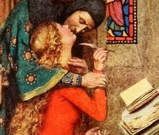
All romances involve love stories, but not all love stories are romances. If you want a Happily-Ever-After, skip the greatest love stories and read a good recently-written romance.
The "greatest love stories" are often tragedies. Some of these love stories involve literary, legendary, or mythological characters, some lived in early history like Antony and Cleopatra. Today's greatest love story, about Heloise and Abelard, is a "tragedy"' but it is also a true story about real lovers who lived in 12th century Paris, France.
HELOISE AND ABELARD
This story is not literary fiction but a tale of real events well documented in medieval times, primarily through a series of letters between the lovers, but also in historical works because these two lovers are considered two of the brightest minds of their time.
Although Heloise became a scholar, writer, and abbess, known and respected throughout France for her insight and intelligence, and Abelard is acclaimed as one of the greatest philosophers of the medieval world, their love left scars on both of them.
"PETER ABELARD, NOW FORGOTTEN, WAS ONCE THE MOST FAMOUS MAN IN THE WORLD." __M.T. Clanchy, Abelard, a Medieval Life.
Around 1115, Peter (Pierre) Abelard (1079 – 1142 AD), already a well-known and well-traveled philosopher, theologian, and teacher, became Master of Notre-Dame de Paris and a canon of Sens (the cathedral of the archdiocese to which Paris belonged). A popular and distinguished figure, he drew crowds of students to study there from all over Europe.
At that time, Heloise d'Argenteuil (1101 – 1162 AD) was a fourteen-year-old student and scholar under the care of her uncle, the secular canon Fulbert. Even at that age, she was well-known among the scholars of France as remarkable for her mastery of classical studies and languages, including Latin, Greek, and Hebrew as well as others.
When Abelard convinced Fulbert to give him a place in Fulbert's home because he couldn't afford to live in his current house while studying, he became Heloise's tutor in exchange for room and board.
There is disagreement among historians regarding Heloise's age when she met Abelard. If the date of her birth is correct, she would have been fourteen or fifteen. Those who don't agree with this argue that she was already well known at the time Abelard came to live with Fulbert, and was more likely in her twenties to have already attained such a reputation among French scholars.
Portrait of Heloise as imagined by a 19th century artist
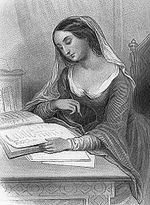
Immediately, Abelard sent her to his sister in Brittany where, in the year 1118, she gave birth to a son whom she named Astrolabe after a scientific instrument. Today it would be like naming your son iPod or Android. Apparently there isn't much about the son in any of the letters or historical accounts.
Painting 1882 Painting by JeanVignuad (1819) Abelard
Fulbert discovering the two love birds
Abelard agreed to marry Heloise to appease Fulbert, but insisted it remain a secret so it wouldn't damage Abelard's career. The marriage was legitimate, but would limit Peter's position in the church, the only means for advancement as a literate. Heloise, being a radical feminist in her day, who later wrote she preferred love to wedlock, freedom to a bond, refused marriage at first but was convinced by Abelard. Soon after, they were married in Paris.
Fulbert, however, felt his reputation had been damaged. In order to punish Abelard, he began spreading the news that Abelard and Heloise were married. Eventually, for Heloise's safety, Abelard sent her to the convent of Argenteuil where she had grown up. Here's where things became really intense.
Fulbert and his friends believed Abelard, after seducing the young woman half his age, had rid himself of Heloise by forcing her become a nun, which wasn't the case at all. One night, one of Abelard own servants and some kinsmen of Fulbert broke into Abelard's room and castrated him. These men were eventually punished by being blinding and castrated, but that didn't do any good for Abelard. Shamed and humiliated, he became a monk at the Abbey of St. Denis in Paris. At Abelard's insistence, and against her own wishes, Heloise became a nun and eventually became the prioress of the convent.
A TRAGIC ENDING
Indeed, this was the end of the physical affair, but not the end of the love story. Peter and Heloise shared a great love and respect for each other's minds and wrote long letters about the political and scholastic events of the time, as well as their personal situations.
In 1129, the Abbey of St. Denis took over the convent. Abelard managed to move the occupants of the entire convent to the Oratory of the Paraclete, a vacant abbey near Champagne which Abelard himself had founded in 1122 and then moved to Lower Brittany. Heloise became the abbess of the new community of nuns.
This was the beginning of correspondence between Heloise and Abelard, which continued for the rest of their lives.
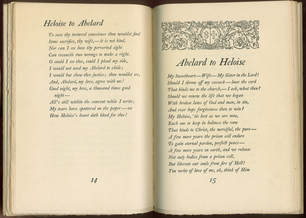
THE DEATH OF PETER ABELARD
During the 1100's there was growing repression of the French population resulting from the increasing power of Rome and the political allegiances between the Normans and the church. Rivalries and power struggles existed at all levels of the feudal system which was taking over France. No doubt Abelard, being who he was, became enmeshed in the political crosscurrents of the times.
In 1140 Abelard was tried and convicted of heresy under nineteen headings of 'capitula'. The trial was orchestrated by Bernard of Claivaux for the purpose of destroying Abelard's power and influence. As a result, in 1141 he was excommunicated by Pope Innocent II and confined to a monastery (Abbey of Cluny). Ultimately, his excommunication was lifted, but he died at the Abbey in 1142 at the age of sixty-three.
His bones were moved to the Oratory of the Paraclete, and when Heloise died twenty years later in 1163 her bones were placed beside his. They were preserved through the French Revolution and moved to Père Lachaise Cemetery in Paris where they rest today.
◘
Resources
http://amolife.com/reviews/top-20-most-famous-love-stories-in-history-and-literature.html
http://allwomenstalk.com/12-most-famous-love-stories-of-all-time/
http://www.yourtango.com/20071315/10-greatest-love-stories-of-all-time-2
http://historylists.org/other/10-greatest-love-stories-in-history.html
https://en.wikipedia.org/wiki/H%C3%A9lo%C3%AFse_(abbess)
http://www.abelardandheloise.com/Story.html
http://classiclit.about.com/cs/articles/a/aa_abelard.htmhttp://classiclit.about.com/cs/articles/a/aa_abelard.htm
http://www.christianitytoday.com/history/issues/issue-30/heloise-and-abelards-tumultuous-affair.html
http://sourcebooks.fordham.edu/source/heloise1.asp
https://en.wikipedia.org/wiki/Peter_Abelard
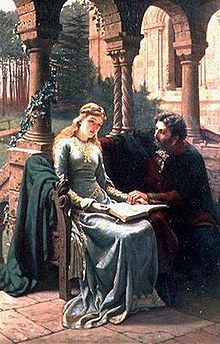
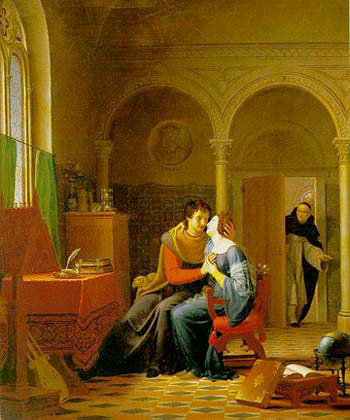
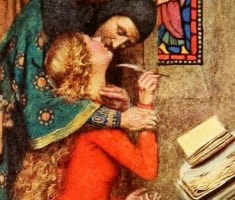
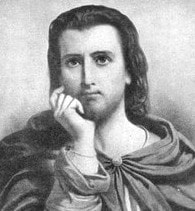
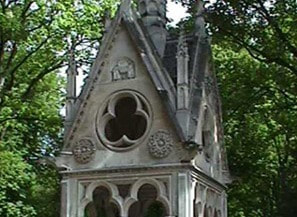
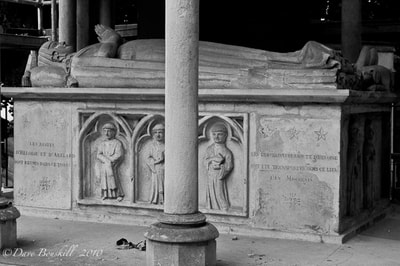
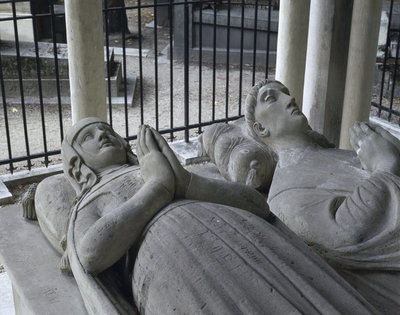
 RSS Feed
RSS Feed